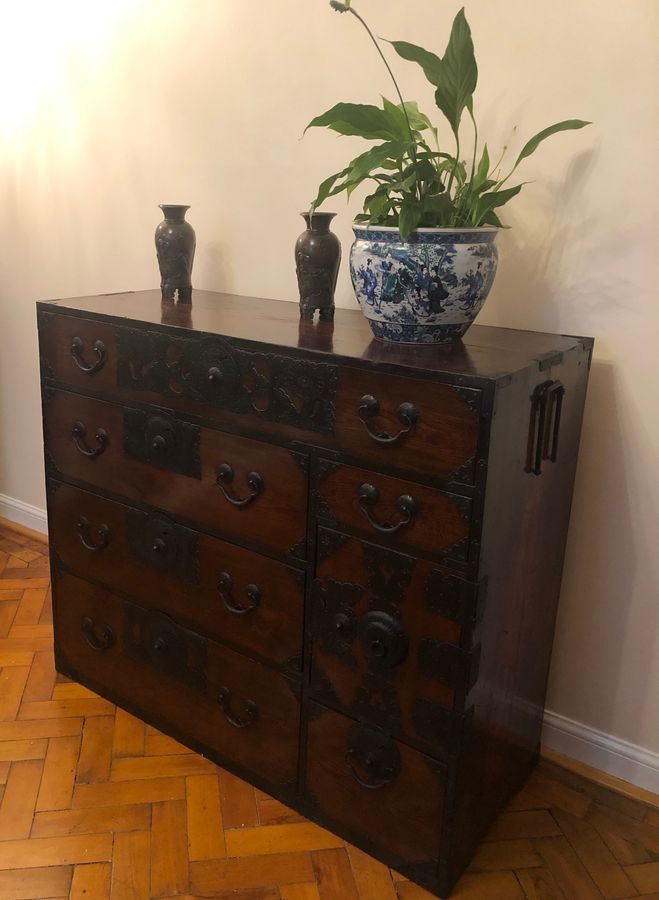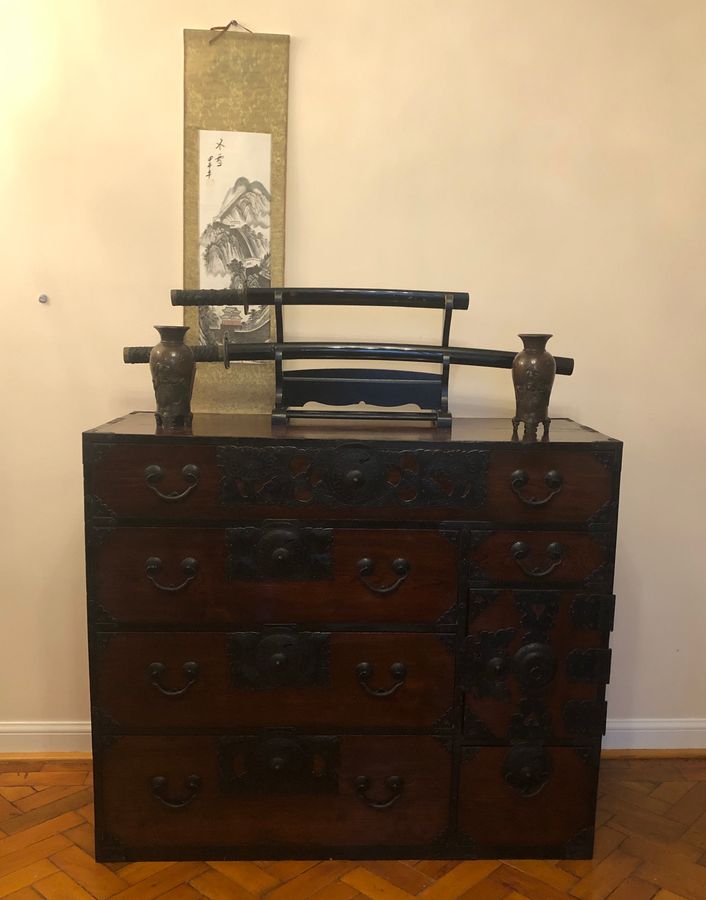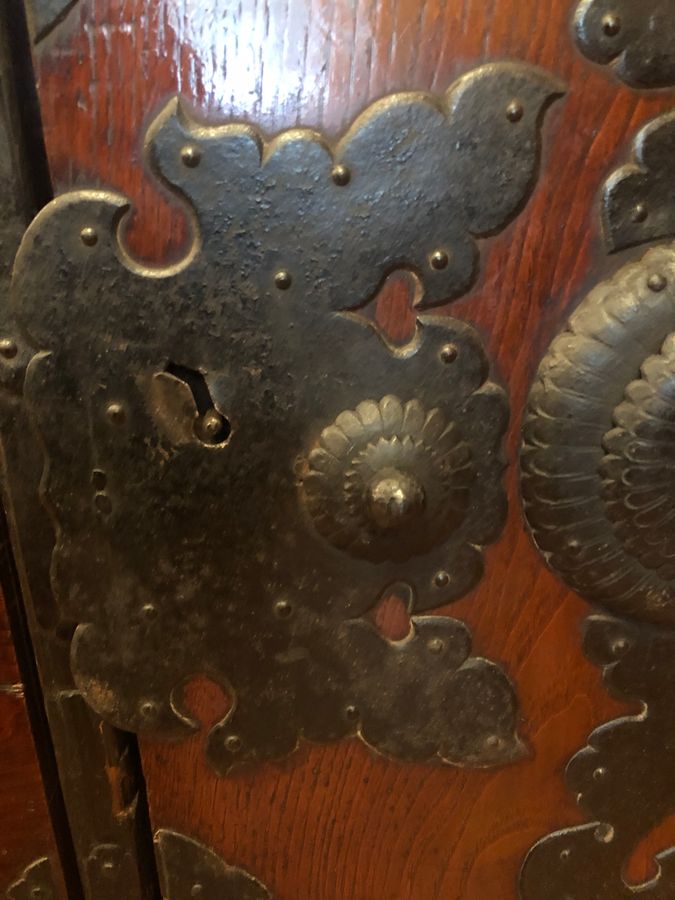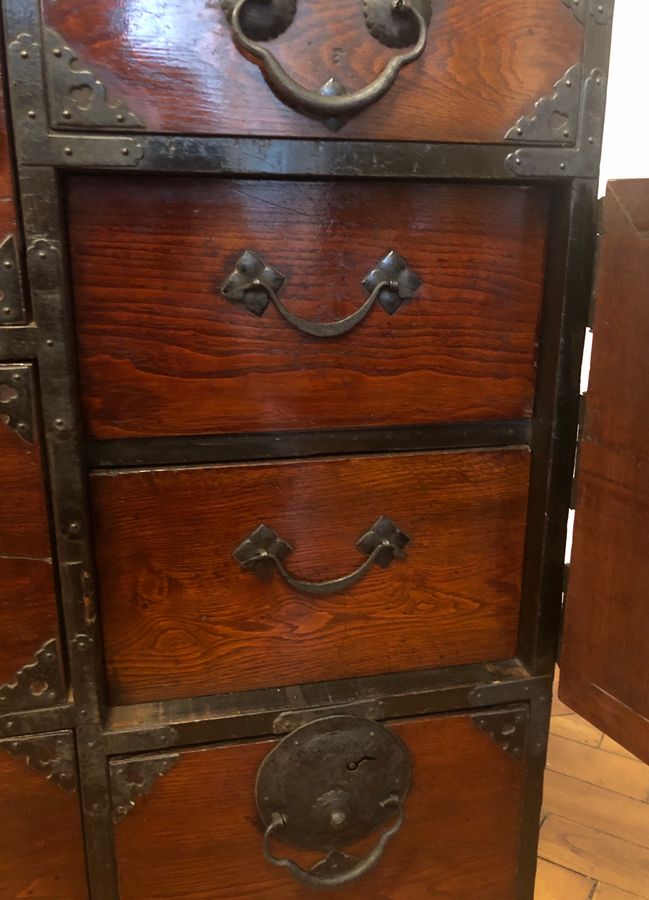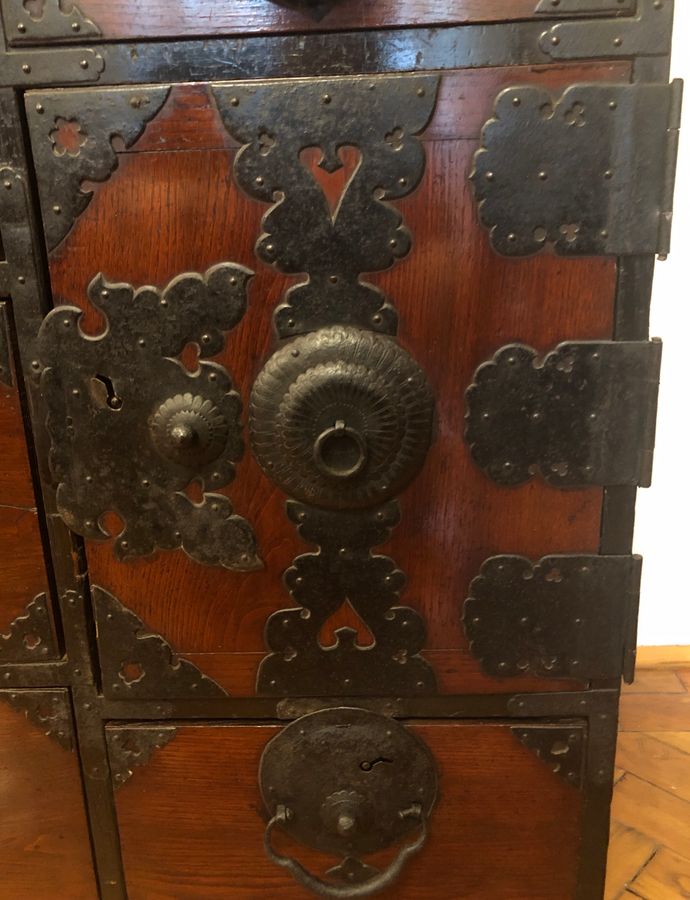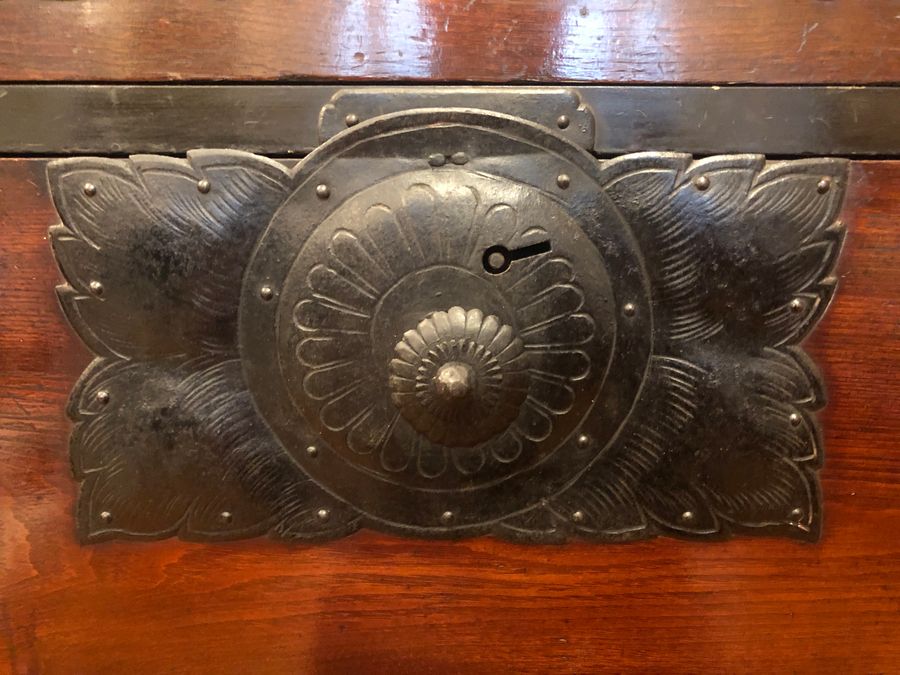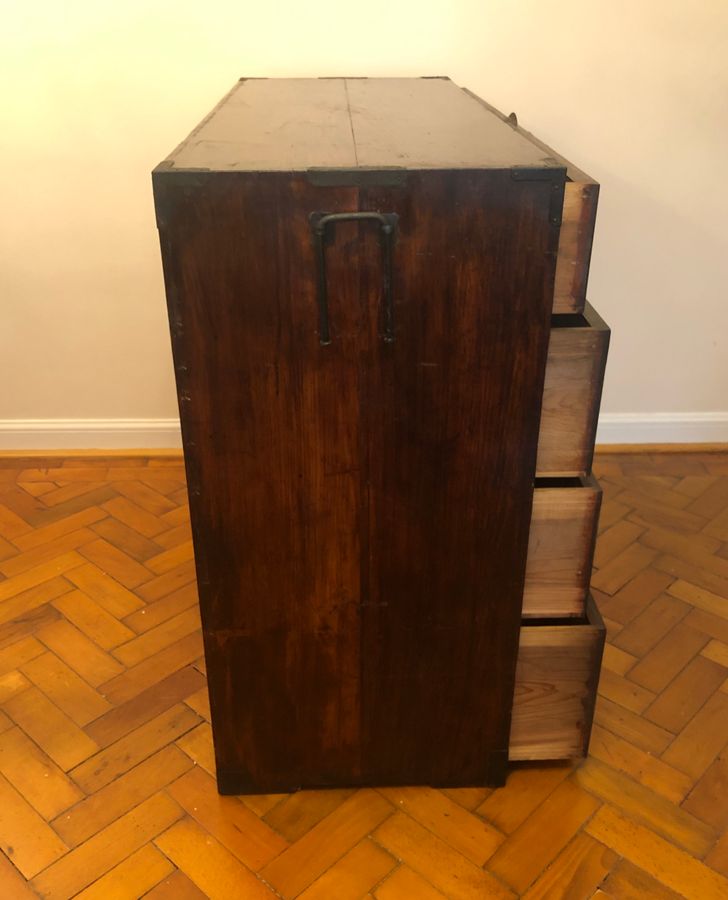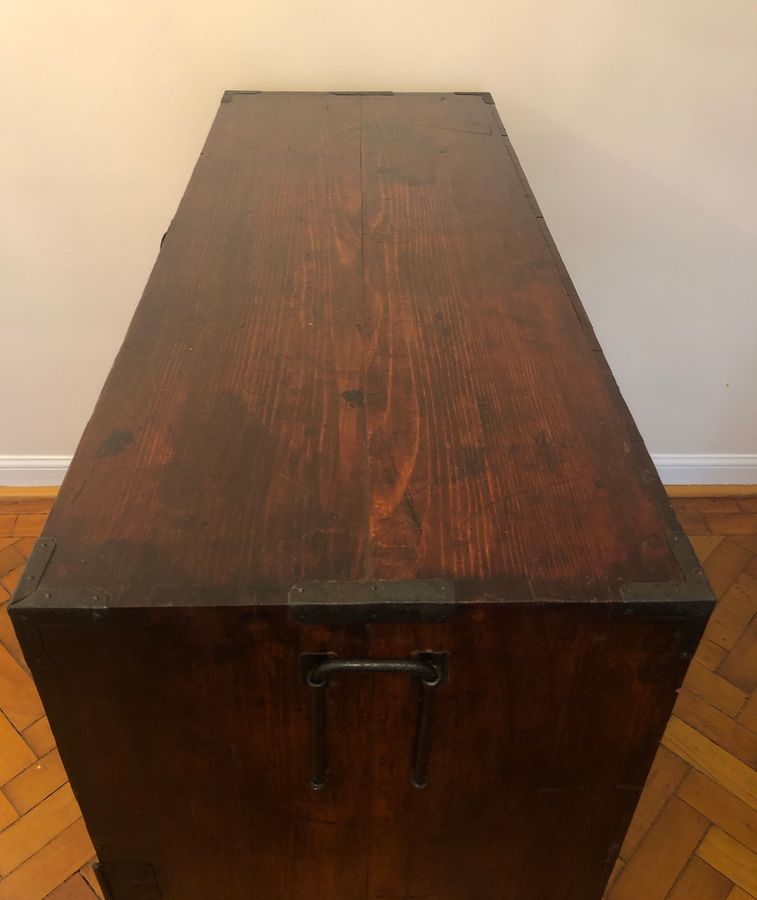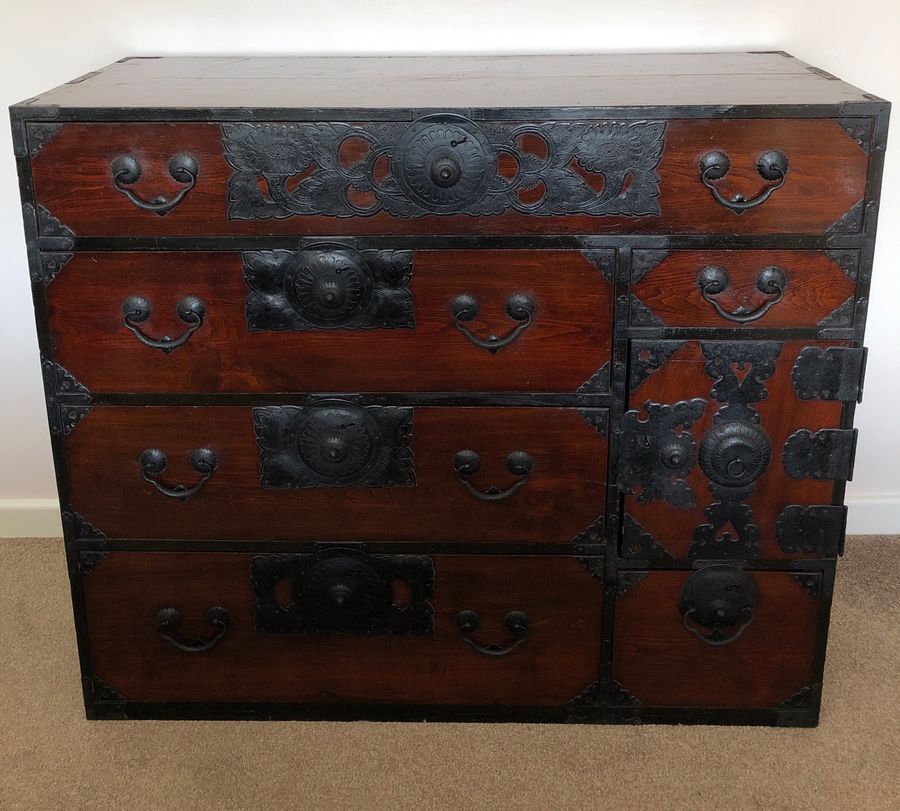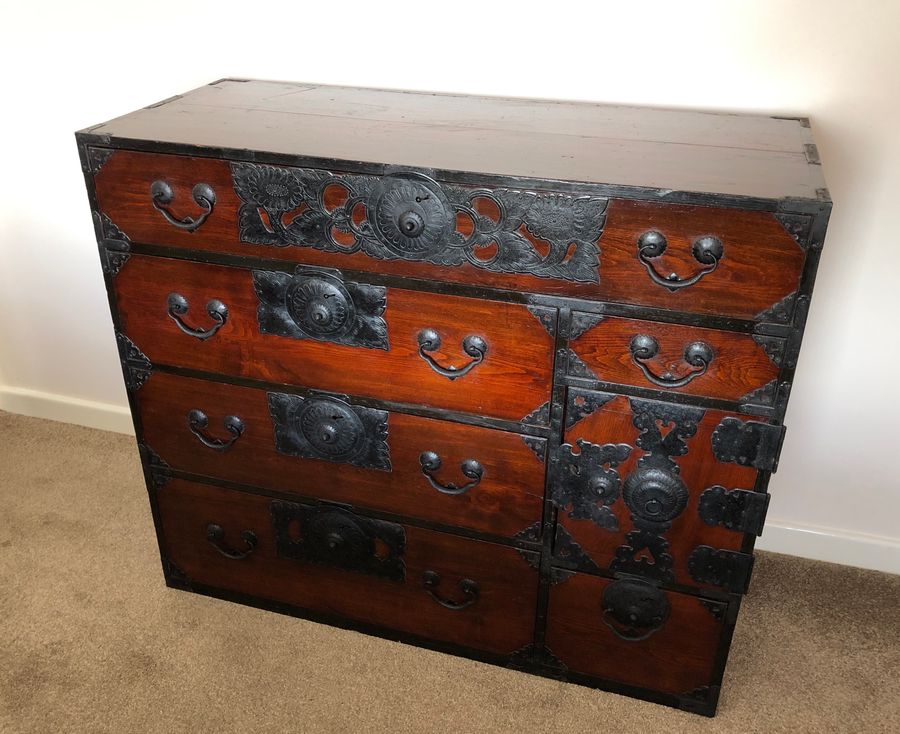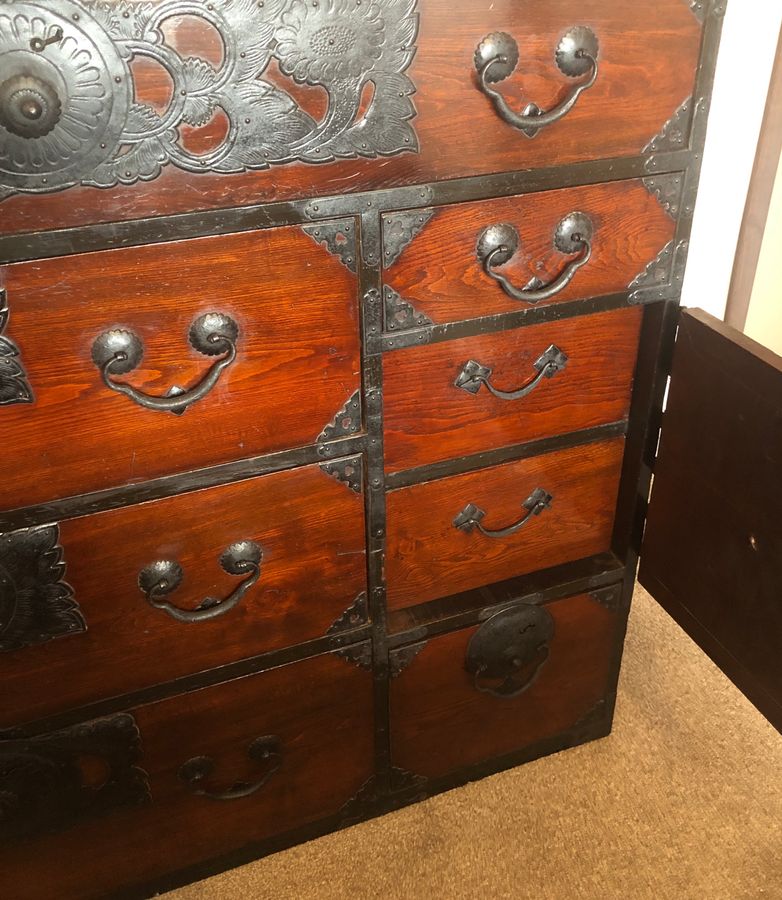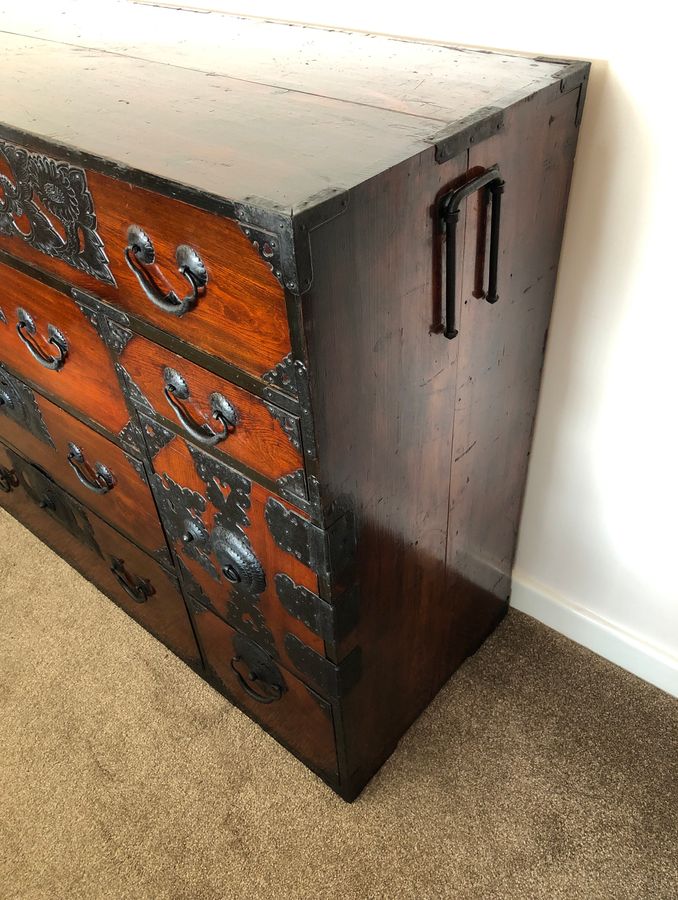featured item
.tansu . japanese sendai tansu
- View other items in:
- antique asia and the far east
- japanese antiques
japanese tansu
Enquire about this antique
Japanese Tansu has 4 antiques for sale.
click here to see them all
Beautiful Sendai Tansu.
As you can see it is in beautiful condition considering its age ( Late Meiji - Early Tashio )
W 109 cm (43”)
H. 94 cm (37”)
D. 44.5cm ( 17. 1/2” )
The design of todays Sendai Tansu was established around 1830 - !877. They are in fact know as as ‘Samurai” style tansu.
They originate when Masumune Date- a daimyo (lord) in the Sengoku period ( 1467- 1568) ordered the building of Aoba Castle, and the Sendai Tansu was an Item made for the daimyo.
At the end of the Edo period - Samurai in the Sendai domain, produced tansu to supplement their income and to store there Katanas and Wakizashi - and of course their ceremonial clothing- and valuable documents. It wasn’t until after the Meiji period that Sendai Tansu became popular - this was probably due to more ordinary people being able to afford these luxury items- and….no restrictions on what type of furniture you could or could not own. ( Samurai had restrictions on what style of furniture you could own.)
The making of a tansu such as this requires 3 different - Carpentry- with no nails or screws, Lacquerwork ( Urushi) to protect and bring out the beauty of the wood, and the metal worker who works on the intricate design of the metal and also the locks. As you can imagine - these Japanese chests were very expensive.
Antiques.co.uk Ref: V3XVKM69K
- Materials:
- wood.
- Width (cm):
- 109
- Height (cm):
- 94
- Depth (cm):
- 44.5
Japanese Tansu
I have been a Cabinetmaker and restorer of Antiques for over 30 years. I have a particular interest in Japanese furniture and Armour and Nihonto. The Tansu's I have on offer have all been lovingly restored where necessary so that you can enjoy them straight away in your own home. Many Tansus available elsewhere require restoration which sometimes costs more than the Tansu itself. Please free to contact me with any questions regarding the Tansus I have on offer.
Contact details
Please use the enquiry form above to contact this seller.






